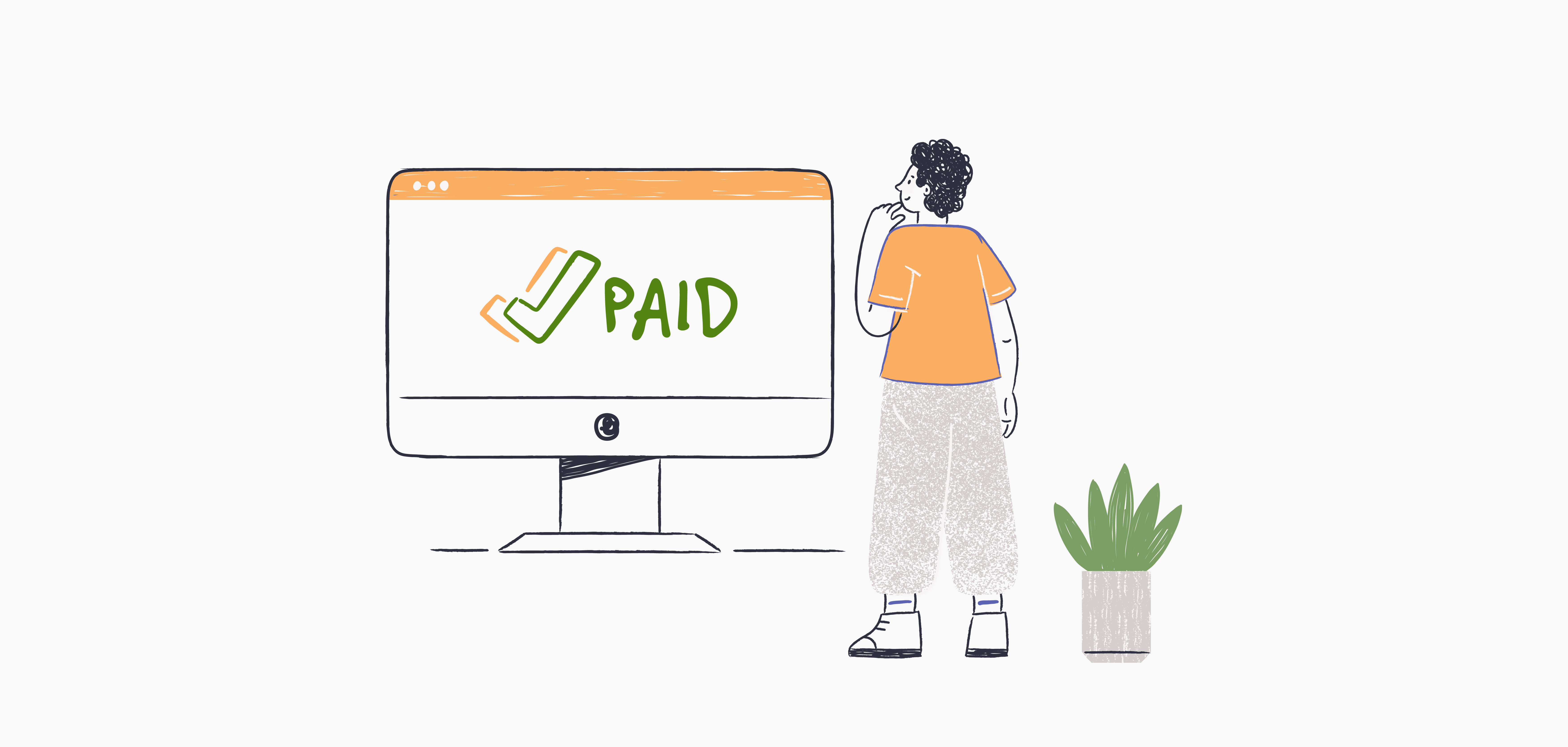Become an insider!
Get our latest payroll and small business articles sent straight to your inbox.
You sifted through the hiring pool, you found the ideal candidate for your small business that checks off all your boxes, you made the offer and they accepted. Congrats on hiring your first employee!
The next step in the process is onboarding your employee. In other words, bringing them onto the team, getting them started in their role and getting payroll set up for them.
An effective onboarding process will mean planning ahead and building out the way you want to handle it before hiring any employees. That way, you’re not scrambling to figure it out as you go (which wouldn’t be a good experience for you or the new employee).
Whether you’re working in-person or have a remote or hybrid work environment, this guide introduces you to the various facets and stages of onboarding, including payroll onboarding, so that you can confidently build out your onboarding plan and welcome aboard your first employee and every employee afterward.
Informal and formal onboarding.
While we might generally think of onboarding as one single term, there are actually two different kinds of onboarding: Informal and formal.
You can probably guess at what these are, but let’s break these down so we have a clear sense of what they look like.
- Informal onboarding: This type of onboarding doesn’t follow a fully structured onboarding plan but might still include elements from a more structured onboarding process, such as shadowing or learning from peers.
- Formal onboarding: This is a structured process wherein the employee is guided through the process of learning about the company, what their role’s expectations are and general conduct.
Having your own small business can feel a bit like a choose-your-own-adventure, so which you choose here may depend on your small business’s capacity and needs. What’s important is making sure your new employee feels comfortable and confident in their new environment and their new role.
Onboarding phases.
When you dive in with formal onboarding, there are phases that you’ll go through while bringing your employee onto the team. These phases are useful for understanding the different stages your employee will be at so that they can more assuredly become a part of your team.
Pre-onboarding
This might just seem like the window of time between your employee accepting the offer right up to their first day on the job, but this period packs a lot of punch.
The pre-onboarding stage is a great opportunity to help ease first-day jitters by sending your new employee details about what to expect. You can share details with them such as what to wear, how lunch and break times work, how they’ll be meeting their team, when payday is, what you’ll need from them so they can get paid on payday and other things like that.
From the business side of the equation, you can also connect with those who’ll be working with this employee, such as managers or department leads, to let them know there’s someone new on the way. That way, you can be on the same page with processes to bring the new person aboard.
If you’re providing your employee with a physical workspace or equipment, you can take care of getting those set up in this time frame so everything is good to go when the employee needs it. Will your employee have a company email? Need access to an HR system or other tools? Get all their accesses and logins prepped.
And don’t forget any paperwork (such as employment agreements or contracts) your employee will need to sign as well! Get whatever paperwork you need sent to the employee, printed out or ready to digitally sign.
The welcome period
This is where your new employee can get to know your company better. Whether you want to call it orientation or something else, this is an introduction to the structure of the company, day-to-day operations, colleagues and the company culture.
Role-specific training
This is when the employee will start to learn their day-to-day tasks and the overall expectations of their role. It’ll also be the period where they learn about the different tools and resources they have to do their job, including who they can call on if they need a hand with something. Some companies have a Learning Management System with documents and modules an employee can learn from, so that’s another option your business can use as well.
Easing into the new role
Time for your employee to spread their wings and fly. This is where an employee transitions from trainee to full-fledged employee. It can include reinforcing expectations and letting the employee work on their own if they’ve had a buddy, mentor or shadow up to this point. Managers can also start working with the employee on things like SMART (Specific, Measurable, Achievable, Relevant, and Time-Bound) goals and objectives.
What your employee needs from you.
As you build the different phases into your onboarding process, you’ll want to consider what the employee needs from you at each stage. An often referenced model comes from Talya Bauer, a Professor at Portland State University. She outlines “Four Cs” as principles to follow when onboarding employees.
Compliance
Compliance refers to company rules, policies and legal requirements and procedures. While something like dress code and clocking in and out can fall under this at a company level, it also encompasses government policies such as the Personal Information Protection and Electronic Documents Act (PIPEDA).
Clarification
Clarification means clearly defining what the employee role looks like so they know what to do and what’s expected of them.
Culture
Your workplace culture covers things like norms (both official and unspoken), values, atmosphere and even leadership.
Connection
Connection looks at things both from a role and workplace relationship perspective. It’ll both be helpful for your employees to know who they can connect with for job-specific needs and to forge that human connection with their colleagues.
Bauer doesn’t stop at just these Four Cs. She also notes that there are three levels of effectiveness when it comes to putting them into action.
- Passive onboarding: Companies only focus on compliance and clarification, but neglect the other two Cs.
- High potential onboarding: There’s a focus on compliance and clarification, and culture and connection are touched upon, but not truly built into the onboarding process.
- Proactive onboarding: This level effectively implements all four Cs and provides a fuller onboarding experience for the employee.
What you need from your employee.
Apart from things like commitment and respect, you’ll also want to consider what forms, paperwork and information you’ll need from your employee, especially for payroll. This includes income tax forms and an employee’s Social Insurance Number, and it’s best to have these completed before or on the first day of work.
TD1 Personal Tax Credit Return form
The first thing to know is you’ll need not one, but two TD1 Personal Tax Credit Return forms filled out — one for provincial and one for federal. (For Québec employees, the equivalent provincial form is a TP-1015.3-V, Source Deductions Return). What these forms do is determine the amount in taxes to be deducted from an individual’s employment income (or pension income). The employee fills this out and gives it to you, the employer. You don’t need to submit this anywhere. It’s for you to keep in your records.
It’s important to note that TD1 forms are for wage- and salary-based employees. If your employees are commission-based, you’ll want to use the TD1X, Statement of Commission Income and Expenses for Payroll Tax Deductions forms instead.
We also touched on TD1 forms in Payroll 101: A Canadian Small Business Guide To Hiring And Paying Your First Employee, so be sure to check that out if you haven’t already.
Social Insurance Numbers
A Social Insurance Number (SIN) is how the government knows who a person is for income tax purposes, so, as you can imagine, it’s a pretty big part of working with payroll. Your employee should include this on their TD1 or equivalent forms so that you have it come time to prepare year-end documents and other important payroll forms.
Keep onboarding simple with software.
As you’re building out your onboarding plan, you might be thinking, “How am I going to keep track of all this?” File folders (whether physical or digital) are one way you can tackle things, but in today’s digital world, it should come as no surprise that software can take a load off your plate and optimize your organizational workflow.
Take People by Wagepoint, for instance. This human resources information system takes people management from flipping through paperwork to an easy-to-use interface for small business owners where you can tackle all kinds of tasks for managing your team. Yes, that includes onboarding. Couple this with a payroll software, and you’ll be well on your way to having an onboarding and payroll process made of gold.
⚡ Want to learn more about People by Wagepoint? Schedule a free demo.
Plugging it into payroll.
Now that you’ve got the information from your employees, it’s time to start thinking about plugging the details into payroll. Like the rest of onboarding so far, there are a few pieces to the puzzle.
Your small business payroll details
From your small business’s side of the equation, here are some of the details you’ll want on hand for payroll, especially if you use a payroll software like Wagepoint. These are an important part of setup and remittances.
- Your legal business name and address
- Your CRA payroll account number
- Your payroll tax remittance frequency
- Your business banking information
- Any provincial or territorial tax numbers (for things like workers’ compensation)
Your employees’ payroll details
You’ll be able to use the details you’ve already collected from your new employee in the TD1, but if you’re missing anything, you’ll want to collect it ASAP so you can start inputting the details into your payroll process. Here are the details you’ll want to make sure you have on hand.
- Employee legal first and last name
- Employee date of birth
- Employee hire date
- Employee SIN
- Employee address
- Employee banking info (if you’re paying by direct deposit)
🧠 Pro tip: For accuracy, ask the employee for a void cheque or direct deposit slip/letter from their bank
Even if you’re not using payroll software (although we recommend you do to simplify the whole payroll process!), you’ll want to keep each of these in your records. They’re all important for things like employee records, tax calculations, year-end forms and Records of Employment.
Income types
Income types literally refers to the different reasons your employee is receiving money. While it might seem okay to just lump everything together, breaking down the different types of income your employee is receiving is important for reporting purposes for your business and the government. (And it’ll help you keep all the details straight, too!)
When you think of income types, keep in mind not only regular wage or salary, but also items like bonuses, overtime, expense allowances, stat holiday earnings and vacation pay. Having a breakdown of what amounts were earned from which income type will keep things clear for you, your employee and the government. In other words, fewer discrepancies, less stress and avoidance of payroll headaches.
Deductions
Quite simply, a payroll deduction is an amount withheld from an employee’s pay cheque. There can be a variety of reasons to do this, from mandated deductions like Employment Insurance (EI) or for Canadian Pension Plan (CPP) contributions to other deductions for health insurance, union dues, garnishments and voluntary additional deductions.
When using payroll software (like Wagepoint) deductions for CPP and EI are often an integrated part of the program, but you’ll want to consider any additional deductions your employee may need so that you can factor them into your payroll calculations.
Put it all together and you get payroll!
Okay, so maybe it’s not quite as simple as throwing all these details in one spot and then magically payroll happens, but each of these pieces are an integral part to properly calculating, recording and accounting for payroll.
Using a payroll software like Wagepoint can make payroll feel like magic, though. The setup process includes entering your business and employee details as well as income types and deductions, but once that’s done, payroll becomes a breeze. Time-saving features like automated calculations and easy workflows can definitely feel like you’re delving into the supernatural.
When getting started with Wagepoint, collecting all of these details and having them readily available before sitting down to start setting up in the software will make the process run much more smoothly.
Don’t worry though. If you’re looking for a Wagepoint setup tour guide, you’ve got the world’s friendliest support team ready to dive in with you. Wagepoint’s payroll onboarding team is here to help you make sure you have a payroll process that won’t steal the hours in your day or keep you up at night.
Once you’ve run payroll a few times, it’ll just be a matter of making sure these details are up to date and then getting any new employee details as you bring more people aboard.
⚡ Tap into the Wagepoint magic and try it free. ⚡
Bonus: Make space in onboarding for open communication.
Open communication helps people and workspaces thrive, so we recommend building this right into your plan. Giving the space for both the employer and employee to safely and confidently give feedback every step of the process will make sure that everyone is comfortable and remains on the same page.
For the employee, it’ll also contribute to a better work environment past the onboarding stage because they’ll be able to see that their voice matters and their thoughts and concerns will be taken into consideration.
Your onboarding process grows with you.
The way your onboarding looks from your first employee to your hundredth employee may look drastically different — and that’s totally okay! As your small business grows, your process will need to shift and ultimately adapt to the changes in your company. As long as you keep these basics of onboarding in your back pocket, you’ll be able to continue welcoming new members to your team with confidence.
Get Wagepoint’s onboarding checklist!
Looking to start your payroll journey with a software that gets small businesses? Wagepoint is here to make processing payroll that much easier. Get Wagepoint’s onboarding checklist to make setting up that much easier.
Additional resources.
- Give Your Small Business Onboarding A Glow Up
- 5 Small Business HR Myths Busted
- Combat Quiet Quitting And Quiet Firing With A Solid Performance Management Process
While every care has been taken to ensure the accuracy of this content, the relevant laws undergo constant revision. It is a best practice to stay informed on these topics and consult with experienced professionals. Any errors or inaccuracies brought to our attention will be corrected as quickly as possible.












